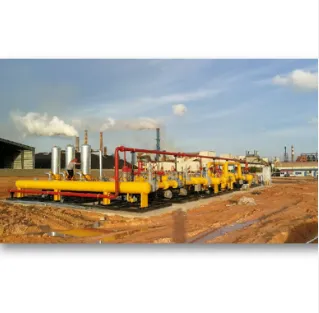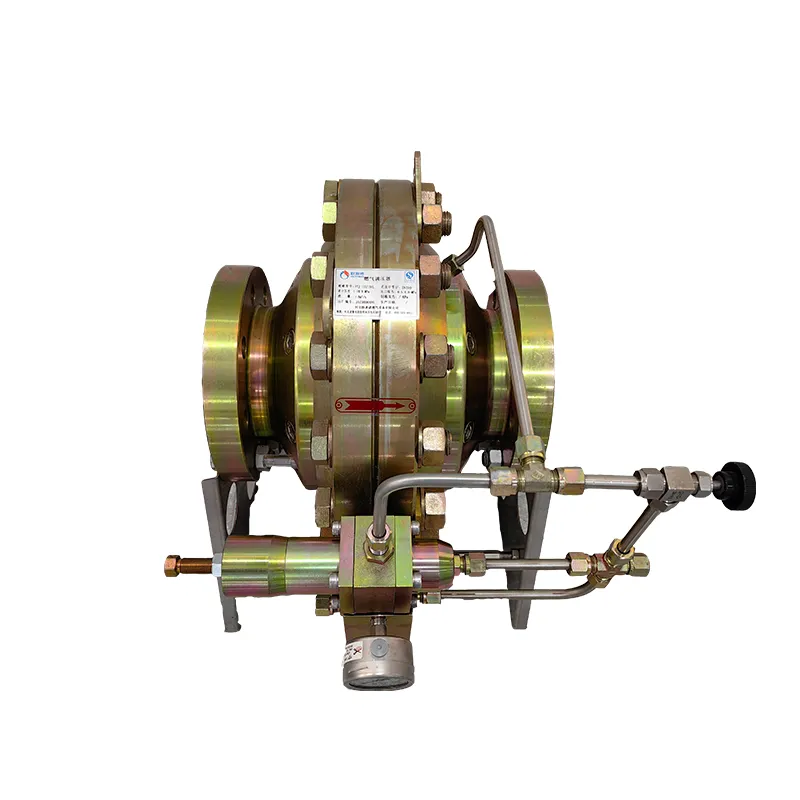
Jul . 06, 2025 06:48
Back to list
High-Performance Pressure Reducing Valve - Reliable Gas & Natural Gas Pressure Regulation Solutions
- Introduction to Pressure Reducing Valve: What Is It and Why Is It Essential?
- Innovative Technologies in Contemporary Gas Pressure Reducing Valve Design
- Comparative Analysis of Leading Natural Gas Pressure Reducing Valve Manufacturers
- Tailored Solutions for Unique Industrial Requirements
- Application Cases Across Distinct Industries
- Technical Advantages and Performance Metrics: Data-Driven Insights
- Final Thoughts: The Role of Pressure Reducing Valve in Optimizing Operations

(pressure reducing valve)
Introduction to Pressure Reducing Valve: What Is It and Why Is It Essential?
Pressure Reducing Valves (PRVs) are critical components in a wide array of industrial fluid and gas systems, ensuring operational safety and system longevity. Their fundamental role is to lower incoming pressure to a pre-set, manageable outlet pressure, thus protecting downstream equipment, piping, and instrumentation from potentially damaging surges or excess force.
In natural gas distribution, a typical system pressure can reach as high as 1000 psi (pounds per square inch), while end-use applications usually require pressures between 1 psi and 60 psi. A 2023 report by Global Market Insights estimated the global gas pressure reducing valve
market value at over USD 1.9 billion, projected to grow at a CAGR of 4.7%, driven by energy industry modernization and regulatory compliance needs.
These safety regulators are indispensable in residential, commercial, and industrial scenarios—from protecting domestic appliances to maintaining the integrity of high-capacity power plants.
Innovative Technologies in Contemporary Gas Pressure Reducing Valve Design
Recent years have witnessed the emergence of advanced technologies within gas pressure reducing valve engineering. Traditional spring-loaded and direct-acting configurations are now being supplemented or replaced by pilot-operated and smart-actuated mechanisms. Integration with IoT (Internet of Things) has enabled real-time pressure monitoring and remote diagnostics, resulting in a significant reduction of system downtime and preventive maintenance costs.
For example, Siemens has developed pressure reducing valves that feature digital sensors communicating with central SCADA (Supervisory Control and Data Acquisition) systems. These smart valves are calibrated to compensate automatically for pressure fluctuations, and can report operational efficiency statistics to plant operators. Meanwhile, materials science advancements, such as the adoption of high-strength alloys and corrosion-resistant coatings, have extended typical service intervals from 12 months to up to 36 months in moderate-duty environments.
The growing adoption of energy-efficient servo-controlled actuators also allows for ultra-fine pressure adjustments (within ±0.5 psi), particularly vital for applications in medical gas supply or semiconductor manufacturing.
Comparative Analysis of Leading Natural Gas Pressure Reducing Valve Manufacturers
Selecting an ideal natural gas pressure reducing valve often involves evaluating products from several prominent global vendors. Criteria include performance, lifespan, certifications, after-sales service, and cost. The following table highlights core distinctions among widely recognized brands:
| Manufacturer | Max Inlet Pressure (psi) | Pressure Accuracy (±psi) | Material of Construction | Certifications | Maintenance Interval (months) | Typical Cost (USD) |
|---|---|---|---|---|---|---|
| Emerson | 1500 | 0.7 | Stainless Steel | CSA, ISO 9001 | 36 | 1,250 |
| Parker | 1200 | 1.0 | Brass/Bronze | UL, CE | 24 | 980 |
| AVK | 1300 | 0.5 | Ductile Iron | EN 334, WRAS | 18 | 1,110 |
| Honeywell | 1000 | 0.8 | Cast Iron/Steel | ATEX, PED | 30 | 1,340 |
| GROVE | 1150 | 0.9 | Stainless Steel | ANSI, API | 24 | 1,050 |
The table showcases how higher-grade materials and stricter certifications often result in increased investment but yield longer maintenance intervals and enhanced reliability, which are vital for sensitive operations in the natural gas sector.
Tailored Solutions for Unique Industrial Requirements
No two industrial operations are identical, and thus the demand for customized gas pressure reducing valve solutions is escalating. System designers and plant engineers are increasingly calling for valves that match exact process specifications, such as ultra-high corrosion resistance for subsea pipelines, extremely low-pressure setpoints for laboratory use, or explosion-proof housing for hazardous locations.
Leading manufacturers now employ computational fluid dynamics (CFD) simulations to optimize valve body geometries based on customer CAD data, resulting in up to 12% tighter pressure control ranges and a potential 9% reduction in energy wastage due to minimized turbulence. Some providers offer express prototyping, accelerating concept-to-installation times from standard 16 weeks to just under 5 weeks for urgent projects. Digital twin technologies further enable remote lifecycle prediction, supporting predictive maintenance scheduling and continuous improvement.
Application Cases Across Distinct Industries
Pressure reducing valves play a transformative role well beyond natural gas distribution. In oil refineries, robust PRVs withstand aggressive hydrocarbons at pressures up to 2000 psi and temperatures exceeding 400°F. Municipal water treatment plants employ gas pressure reducing valves to stabilize chlorine gas dosing with precision for safe, compliant drinking water supply.
A leading pharmaceutical manufacturer reported a 23% reduction in production batch rejections after installing a smart pressure reducing valve network, enhancing media sterility by maintaining gas pressure within a ±0.3 psi tolerance. In the chemical industry, PRVs alleviate the risk of catastrophic events by ensuring reactive gases remain within safe pressure thresholds at all times.
In the food and beverage sector, oxygen and CO₂ gas supply lines backed by high-performance PRVs guarantee carbonation consistency and product safety, contributing to overall brand reputation. Data-driven studies affirm that payback for advanced PRV upgrades can occur within 18–24 months, primarily due to higher equipment reliability and reduced energy expenditure.
Technical Advantages and Performance Metrics: Data-Driven Insights
When evaluating pressure reducing valves from a technical perspective, several key performance metrics are critical: response time, pressure stability, leakage rate, and maintenance cycle. For example, cutting-edge pilot-operated PRVs deliver response times as fast as 0.7 seconds and maintain outlet pressure deviations within 1% of the set point.
Leakage rates have rapidly decreased, with some pressure reducing valves achieving tightness ratings below 0.02 standard cubic centimeters per hour (scc/h). In harsh conditions—a refinery context, for instance—state-of-the-art PRVs have demonstrated MTBF (Mean Time Between Failures) of up to 72,000 hours.
In a 2022 industry survey, 89% of users reported measurable safety improvements post-implementation, and system downtime attributed to valve malfunctions dropped by an average of 37%. This not only enhances compliance but also lowers OPEX by minimizing emergency shutdowns and insurance claims.
Final Thoughts: The Role of Pressure Reducing Valve in Optimizing Operations
Pressure reducing valves are indispensable for industries prioritizing operational efficiency, regulatory compliance, and the highest levels of equipment protection. Whether in natural gas transmission, chemical production, pharmaceutical manufacturing, or municipal water treatment, the adoption of modern gas pressure reducing valve solutions guarantees not only safety and cost savings but also future readiness as new standards and performance expectations evolve.
As industries continue to demand greater process optimization, the pressure reducing valve—supported by ongoing technological innovation and tailored engineering—remains at the core of secure and sustainable system operations.

(pressure reducing valve)
FAQS on pressure reducing valve
Q: What is a pressure reducing valve?
A: A pressure reducing valve is a device that lowers incoming water or gas pressure to a safer, usable level. It helps protect downstream equipment and ensures stable flow. They're widely used in plumbing and gas supply systems.Q: How does a gas pressure reducing valve work?
A: A gas pressure reducing valve automatically adjusts gas flow to lower high inlet pressure to a set, safer outlet pressure. This protects appliances and piping from excess pressure. It's commonly used in residential, commercial, and industrial gas systems.Q: Why is a pressure reducing valve important in natural gas systems?
A: A natural gas pressure reducing valve ensures that the gas delivered to end-users is at a safe, consistent pressure. This prevents damage to appliances and reduces safety risks. It is essential for both home and industrial applications.Q: What are common applications of natural gas pressure reducing valves?
A: Natural gas pressure reducing valves are used in household heating systems, gas appliances, and industrial processing plants. They provide consistent pressure for safe operation. Their reliability is critical for system safety and efficiency.Q: How do I know if my pressure reducing valve needs replacement?
A: If you notice fluctuating pressure, unusual noises, or leaks near the valve, it may need replacement. Routine inspections also help spot wear or malfunction. Contact a professional for proper assessment and safety checks.Latest news
-
What Role Do Pressure Reducers Play in Industrial Systems?NewsJun.12,2025
-
What Role Do Gas Valves Play in Industrial Safety and Functionality?NewsJun.12,2025
-
Key Components in Energy Management and Temperature ControlNewsJun.12,2025
-
Integral Components in Mechanical and Energy SystemsNewsJun.12,2025
-
How Do Industrial Valves and Filters Ensure System Safety and Efficiency?NewsJun.12,2025
-
Essential Components for Industrial Fluid Management: Valves and SystemsNewsJun.12,2025

